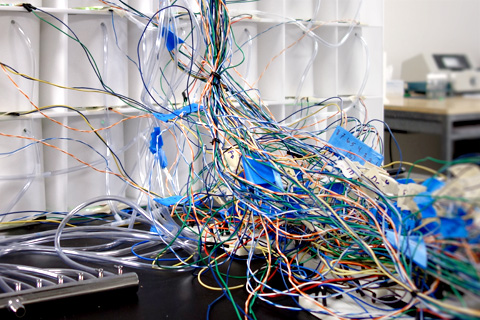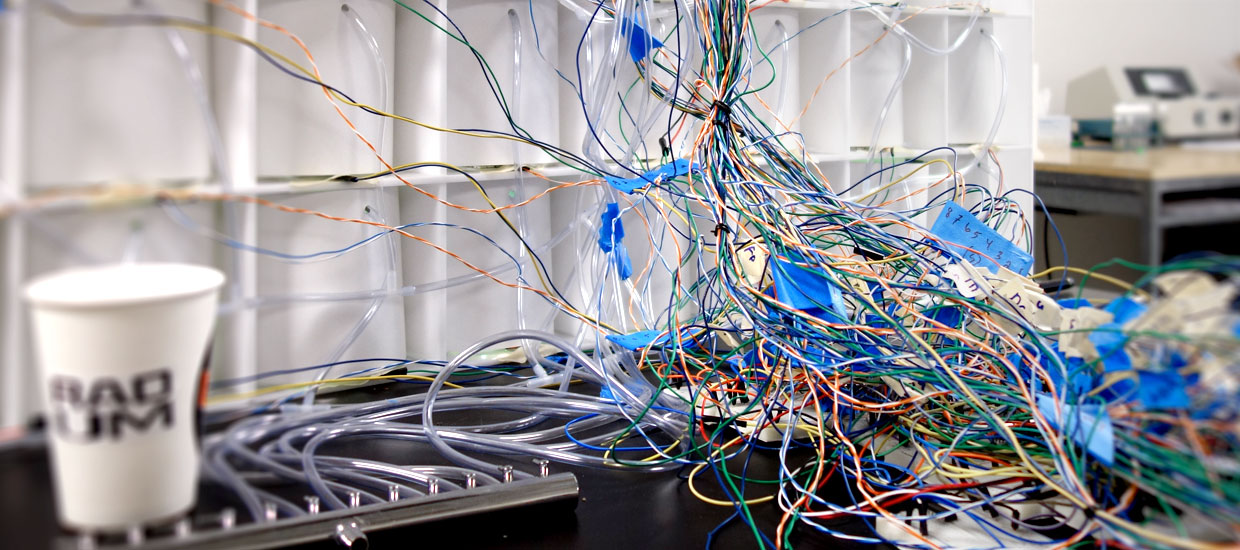Technology & ComputationResponsive Architecture Design is premised on the notion that every building or landscape component can be equipped with computational power. Responsive Architecture Design research is supported by the School’s
RAD-UM lab, which provides resources and expertise for project-based research on the spatial ramifications of embedded technology and ubiquitous computing. Projects at RAD-UM are set up for multi-disciplinary collaboration and for partnerships with industry.
Former Assistant Professor Juhong Park introduced the Design Machine Learning Lab to the School of Architecture in 2014, building on his previous research on Human-Machine-Collaboration as a vehicle to expand the horizon of human capability. The DML was initiated to support the School’s Master of Science in Architecture program. Also in 2014, Dean Rodolphe el-Khoury inaugurated the RAD-UM lab, formerly located at the John H Daniels Faculty of Architecture, Landscape & Design at the University of Toronto, to the School of Architecture.
Ongoing Projects and Resources:
RAD-UM. Projects at RAD-UM develop models for digitally enhanced environments to better handle persistent and emerging challenges in the areas of healthcare, building technology and sustainability. The projects are set up for multi-disciplinary collaboration and for potential development in partnership with industry.
Design Machine Learning Lab (DML). In collaboration with UM’s Department of Computer Science, School of Communication, School of Education, School of Law, School of Nursing and Health Studies, and the Miller School of Medicine, DML is dedicated to the research and education of digital design thinking in architecture focusing on computational design and digital fabrication. The research areas include, but are not limited to, parametric and algorithmic design, physical computing (sensors and actuators), bio-mimicry, robotic fabrication, machine learning, and computer-vision. The lab focuses on training innovative professionals rather than on innovative technology with the aim of training students as independent thinkers and innovative architects who can think and design with computational power. Current research include 3D printing of mycelium-based structural materials in collaboration with the Colleges of Engineering and Arts and Science, and clay 3D printing in coordination with the Department of Art and Art History.





